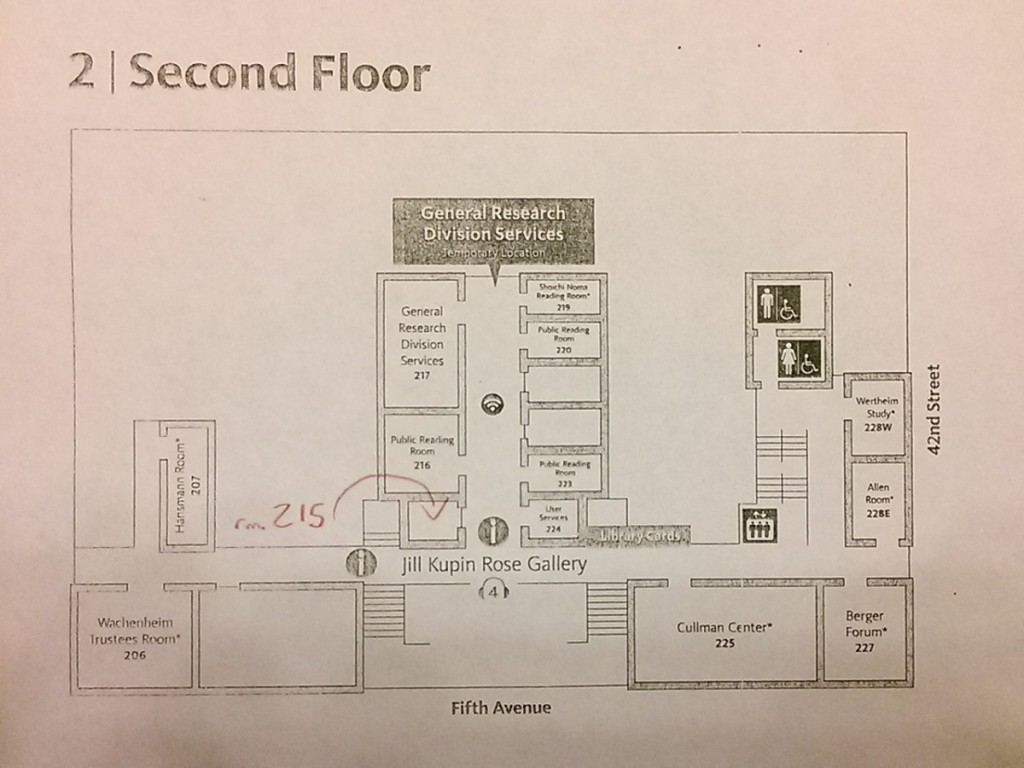This Wednesday, October 21 we meet at 10 a.m. at the New York Public Library, 42nd Street between 5th and 6th Avenues (directions). We’re visiting the Map collection there and consulting with a map librarian, Artis Q. Wright, Library Specialist II of the NYPL Maps Division.
Take the B, D, F, or M trains to 42nd Street/Bryant Park, the 7 train to 5th Avenue, or the 4, 5 ,6, 7 or S to Grand Central/42nd Street. Enter the library at the main entrance (look for the lions, Patience and Fortitude), and head to the second floor to room 215 (click to enlarge):
For this Wednesday’s visit to the NYPL Map Room, please write a pre-visit reflection blog post (see previous post and assigned reading). Please also write a reflection blog post on today’s conversation with the Urban Design studio class.
On Monday, October 26 at 10 a.m. we visit the Brooklyn Collection at the Brooklyn Public Library, Central Library at Grand Army Plaza. Take the 2 or 3 train to Grand Army Plaza or the B41 bus to Flatbush Avenue & Grand Army Plaza; the library is across Grand Army Plaza from the subway stop; the bus stops directly across Flatbush Avenue from the library’s entrance. Let’s meet at 10 just outside the Brooklyn Collection on the second floor of the library (see floorplan). The library opens at 9; if you arrive early, there’s a cafe on the ground floor.
Please get in touch with any questions you have about where we are meeting and when.
~Prof. Leonard





